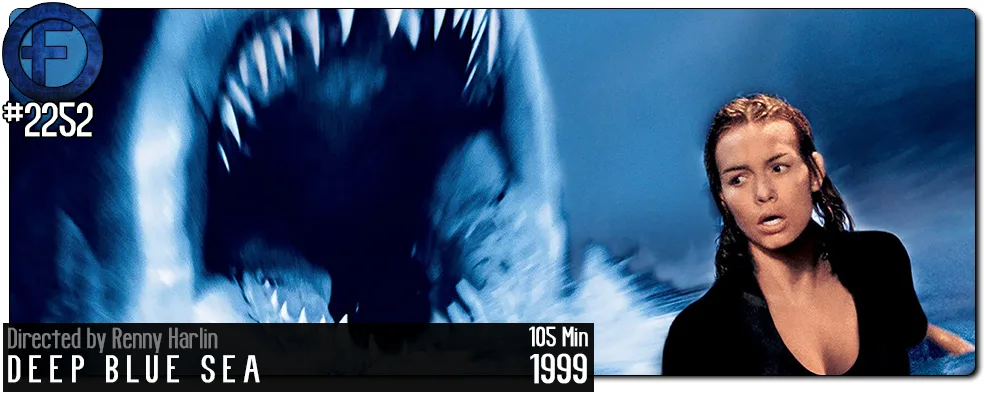Movie Review – Deep Blue Sea (1999)
Principal Cast : Thomas Jane, Saffron Burrows, LL Cool J, Jacqueline McKenzie, Michael Rappaport, Stellan Skarsgard, Aida Turturro, Samuel L Jackson.
Synopsis: Searching for a cure to Alzheimer’s disease, a group of scientists on an isolated research facility become the prey, as a trio of intelligent sharks fight back.
********
In the late ’90s, the silver screen was graced by a cinematic gem that submerged its audience into a world of aquatic absurdity and action-packed entertainment. Deep Blue Sea, directed by Renny Harlin, is a shark-infested extravaganza that gleefully embraces its silliness and unapologetically delivers a riveting rollercoaster of thrills. This shark blockbuster, while unapologetically dumb, provides a fun subgenre classic that is pure popcorn-fuelled fun.
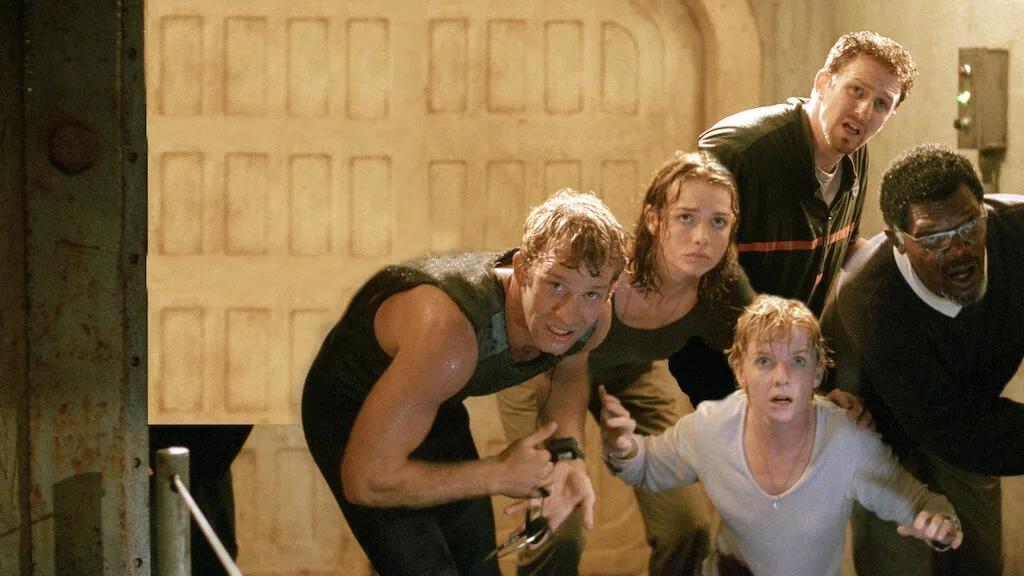
Deep Blue Sea introduces us to a sprawling underwater research facility, Aquatica, where a team of scientists is fervently working on a ground-breaking experiment. Dr. Susan McAlester (Saffron Burrows) is the brilliant mind behind the project, aiming to harvest shark brain tissue in the hope of discovering a cure for Alzheimer’s disease. To achieve this, she has genetically engineered a group of hyper-intelligent Mako sharks. However, when one of these genetically enhanced sharks escapes and wreaks havoc, the scientists, along with a team of unlikely heroes, including shark wrangler Carter Blake (Thomas Jane) and shark expert Preacher (LL Cool J), must band together to survive the onslaught of these cunning and deadly predators. As the facility floods and the sharks prowl the corridors, the stakes are raised, and it becomes a battle for survival against nature’s deadliest predators.
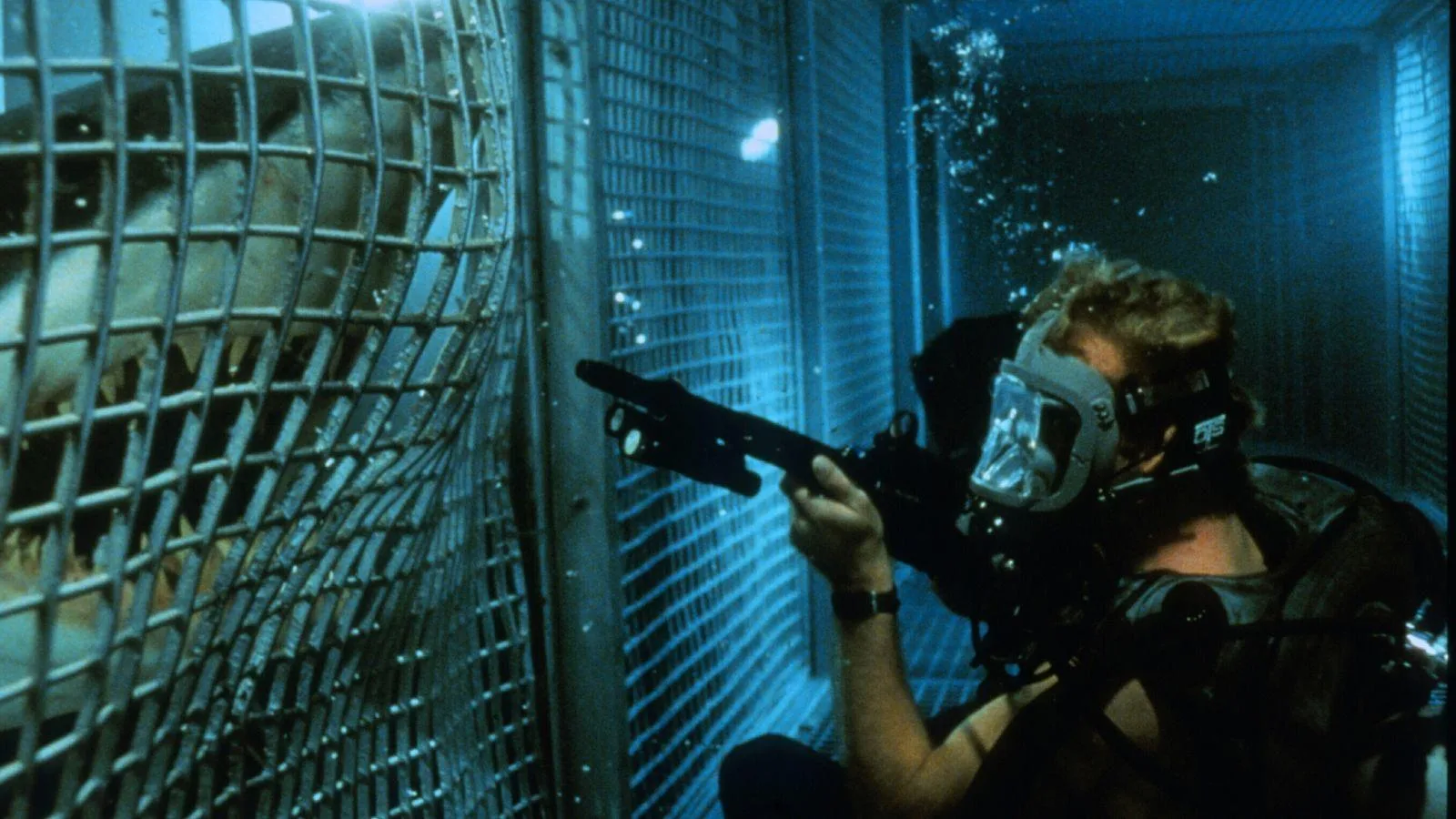
Deep Blue Sea stands as a testament to the beauty of unabashed silliness in cinema. It’s a film that doesn’t take itself too seriously, and that’s exactly what makes it so enjoyable. From the ludicrous premise of genetically modified super-smart sharks to the over-the-top death sequences, the film revels in its own absurdity. Immediately, the kills in Deep Blue Sea are a highlight. The sharks’ intelligence makes them formidable adversaries, leading to inventive and often surprising deaths. This creative carnage adds a layer of anticipation to each encounter, as the audience is left guessing who will be the next victim. There are several moments that will absolutely make you jump, and more than a few that’ll have your fingernails shredding the armrests of your couch – at times Deep Blue Sea is incredibly tense. And yet, while the film might not reach quite the same suspense levels as its predecessors like Jaws, it compensates with sheer brutality, keeping viewers engaged.
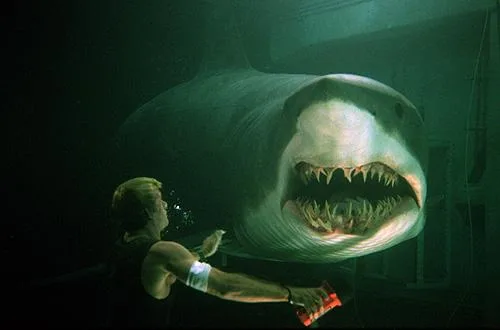
What sets Deep Blue Sea apart is its delightful infusion of comedy into the shark-infested chaos. LL Cool J’s character, Preacher, stands out as a comedic beacon in the film. His interactions with his avian companion, parrot bird Einstein, provide moments of levity that punctuate the tension. His humour, combined with his survival instincts, makes him an endearing and entertaining character, serving as a crucial counterpoint to the perilous situation. While the comedic elements primarily revolve around Preacher, there are moments of situational humour that break the tension, reminding the audience that this is, at its core, a movie designed for pure entertainment.
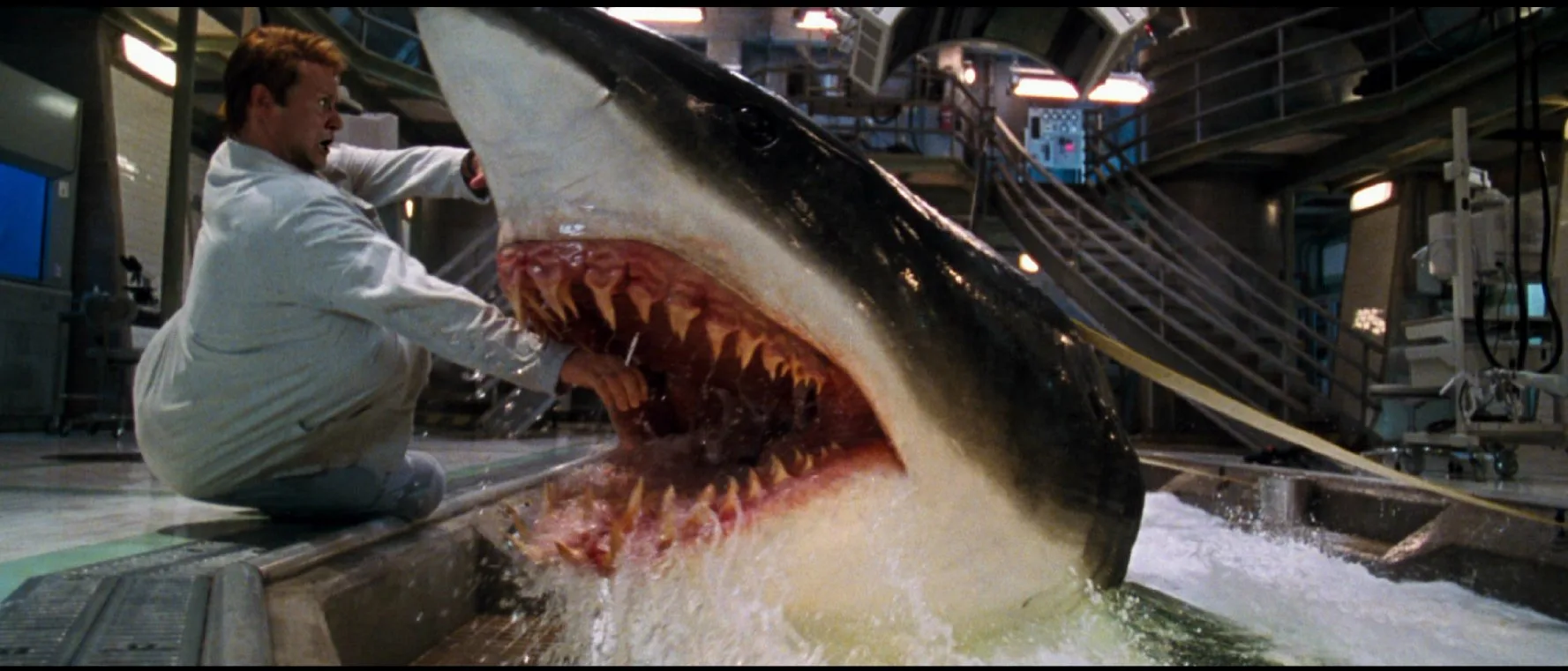
Deep Blue Sea is unrelenting in its action sequences. From the opening shark attack to the desperate struggle for survival in the submerged research facility, the film maintains a brisk pace. Renny Harlin’s direction shines in these sequences, particularly in the underwater scenes where the characters navigate through labyrinthine tunnels and chambers. The film successfully builds tension through its set pieces, with Harlin expertly utilizing confined spaces and waterlogged environments to create an atmosphere of dread. The submerged facility itself becomes a character, a claustrophobic and unforgiving setting that amplifies the stakes.
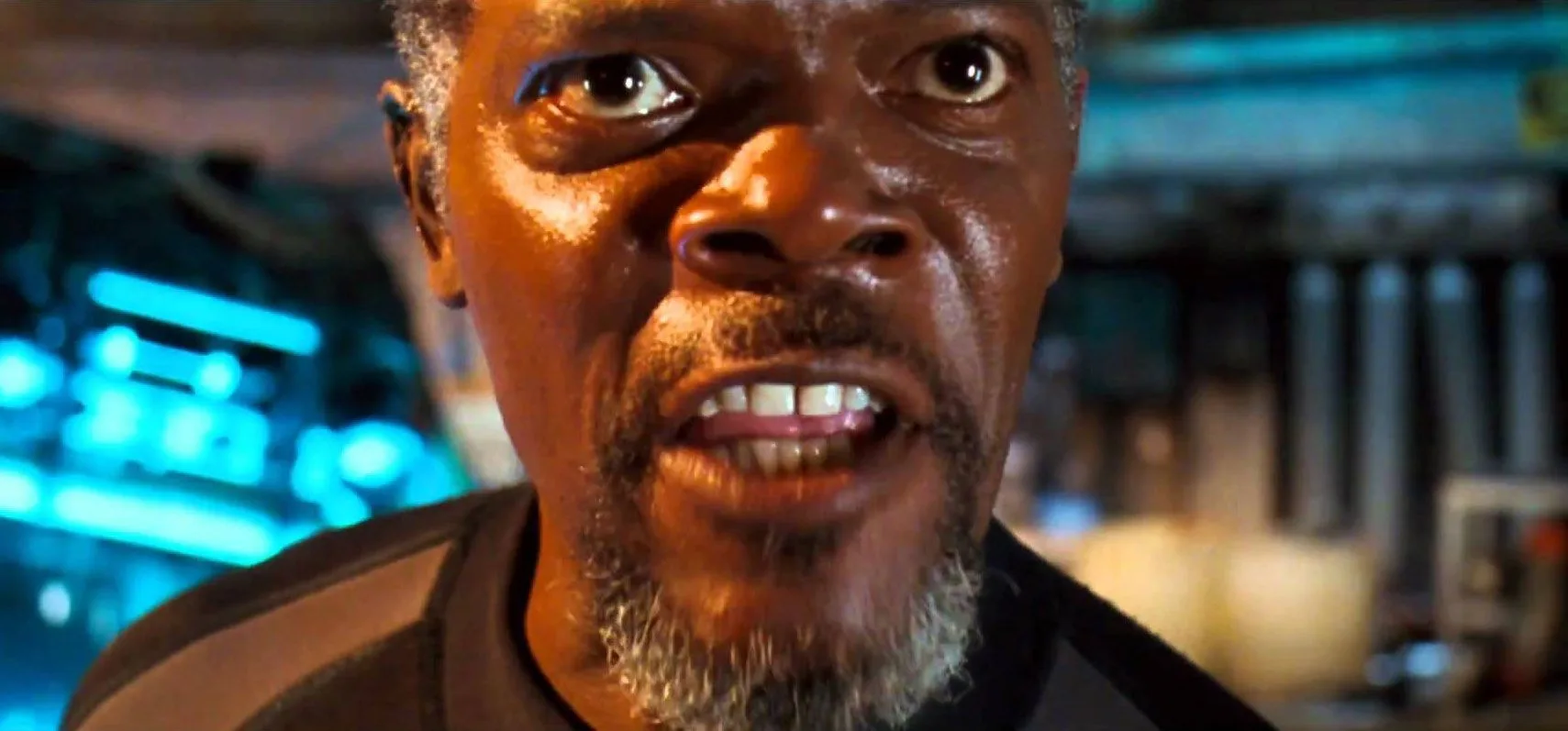
One aspect of Deep Blue Sea that critics often highlight is the sheer absurdity of the script. The idea of genetically enhanced sharks with human-level intelligence is undoubtedly a far-fetched one. While the script embraces the silliness, it’s undeniably riddled with logical inconsistencies and moments that require a suspension of disbelief. However, what elevates the film beyond its dubious premise is the commitment and talent of the actors. Saffron Burrows brings gravitas to her role as Dr. McAlester, while Thomas Jane delivers a charismatic performance as shark wrangler Carter Blake. Samuel L. Jackson’s appearance as Russell Franklin, a corporate executive overseeing the project, injects gravitas and a memorable monologue that’s become iconic in its own right.
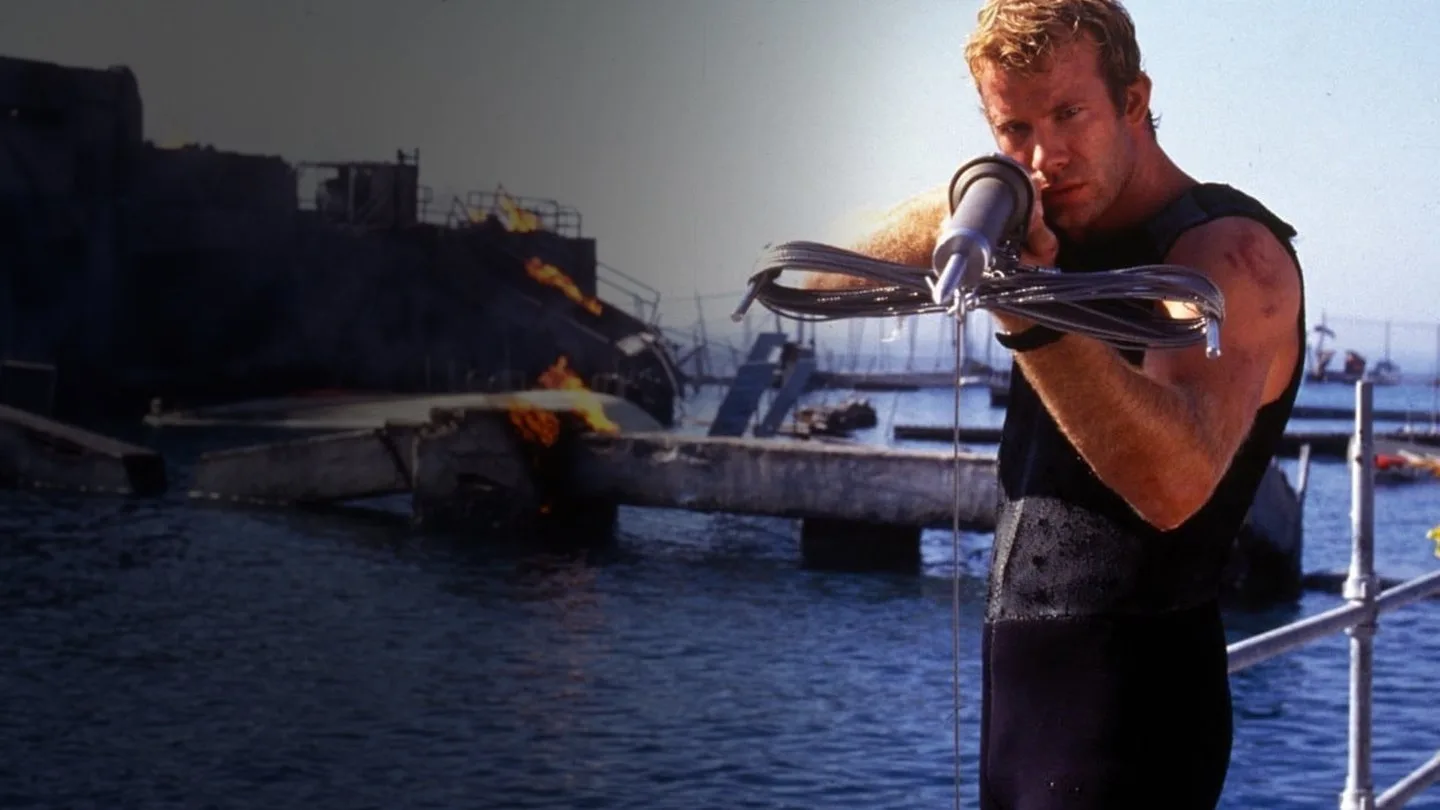
The editing in Deep Blue Sea is noteworthy for its ability to maintain a kinetic pace. With a film that boasts action sequences aplenty, it’s crucial for the editing to keep the audience engaged and invested. The underwater sequences, in particular, are expertly done, creating a sense of urgency and danger. The film’s musical score, composed by Trevor Rabin, complements the on-screen chaos, adding to the tension and accentuates the thrilling moments, creating an auditory experience that complements the visuals. Thankfully, aping John Williams’ classic motif from Jaws isn’t a problem here. Renny Harlin, known for his action-oriented filmmaking, steps into the director’s chair with gusto. His experience in the action genre shines through, particularly in the sequences involving the sharks. Harlin’s direction doesn’t shy away from the visceral aspects of the story. It revels in the gruesome encounters, which keeps the audience on the edge of their seats. Harlin’s use of underwater environments is a notable directorial choice. The submerged research facility provides an additional layer of tension, and Harlin maximizes its potential. The fluidity of his camera work, combined with practical effects and animatronic sharks, gives the film a physicality that makes the peril feel more immediate.
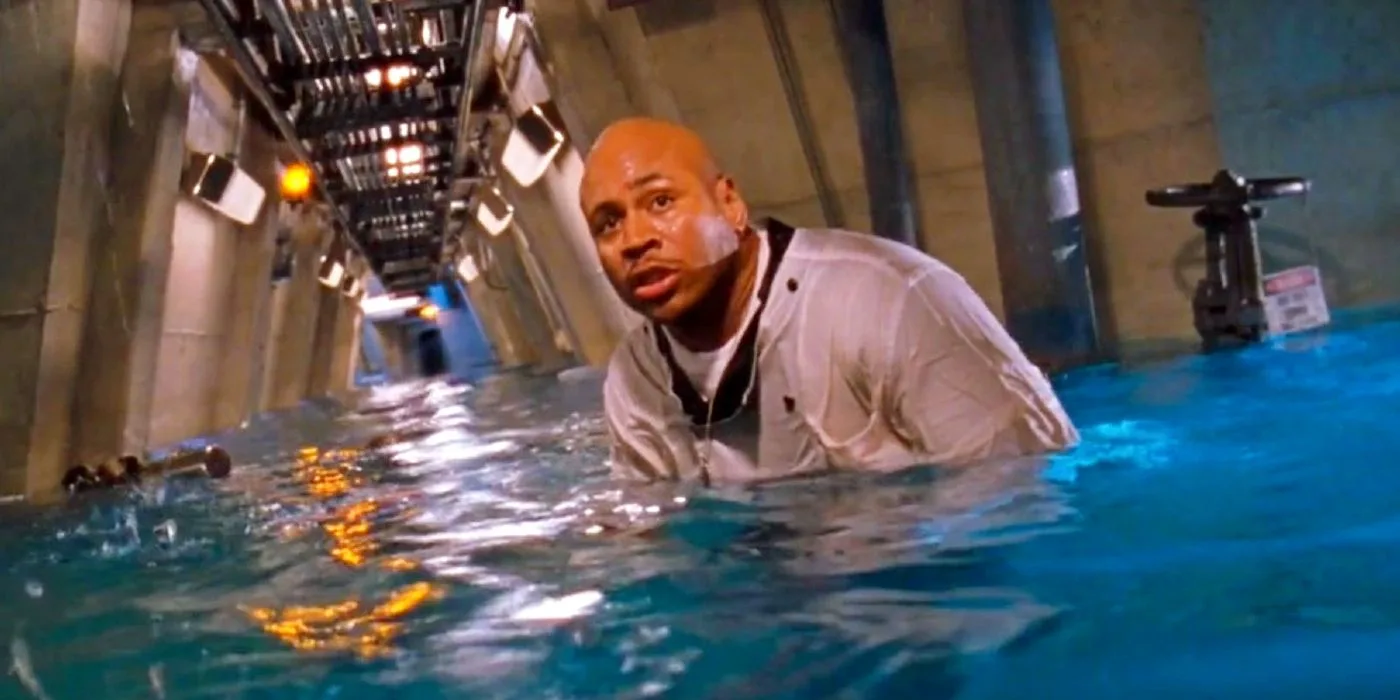
Deep Blue Sea is a bonkers cinematic concoction that wholeheartedly embraces its own absurdity. It revels in its absurd premise, offers creative and brutal shark kills, infuses comedy amidst danger, and maintains a brisk pace filled with action and stakes. While the script may be deemed preposterous, the commitment of the actors and Renny Harlin’s directorial flair elevate the film into an unforgettable shark-filled thrill ride. It’s a movie that doesn’t aspire to be high art; instead, it aspires to entertain, and in that, it succeeds with flying (or rather, swimming) colors. So, dive into the depths of Deep Blue Sea and relish in its unapologetic, dumb, and delightful fun.

